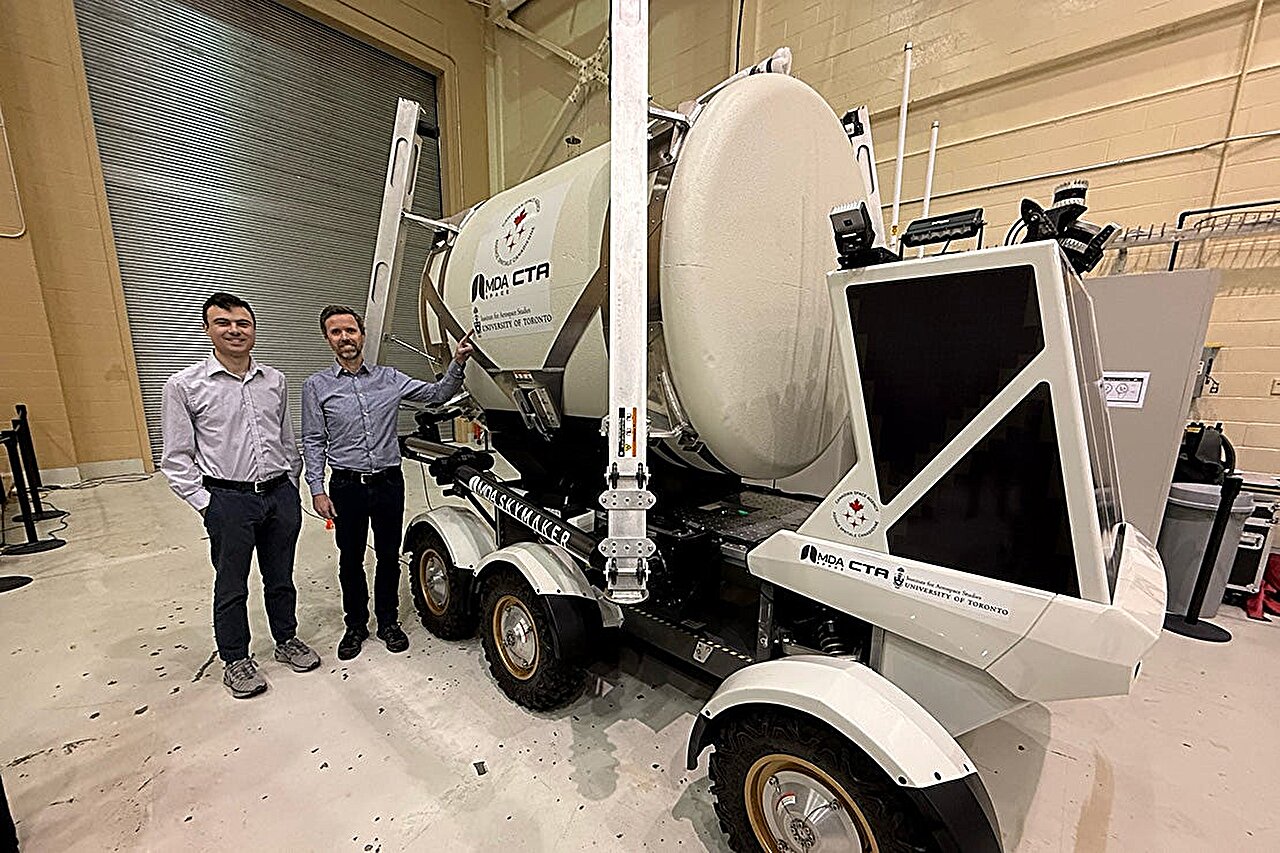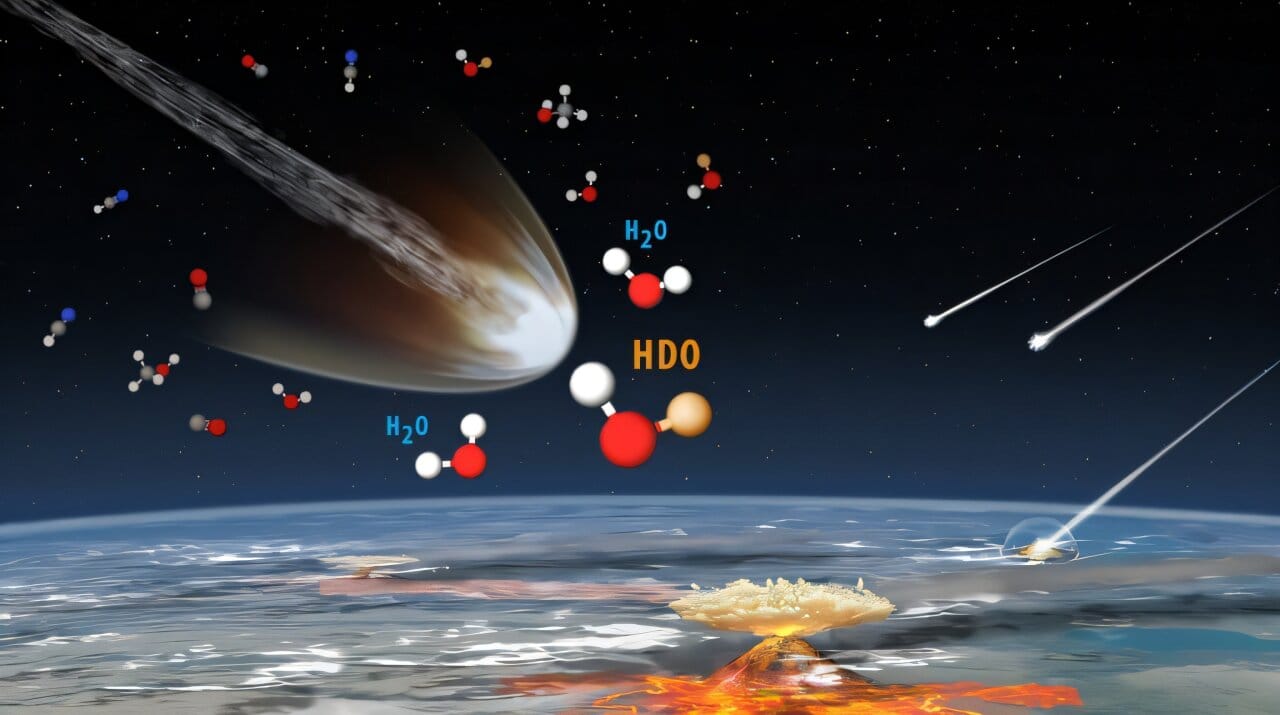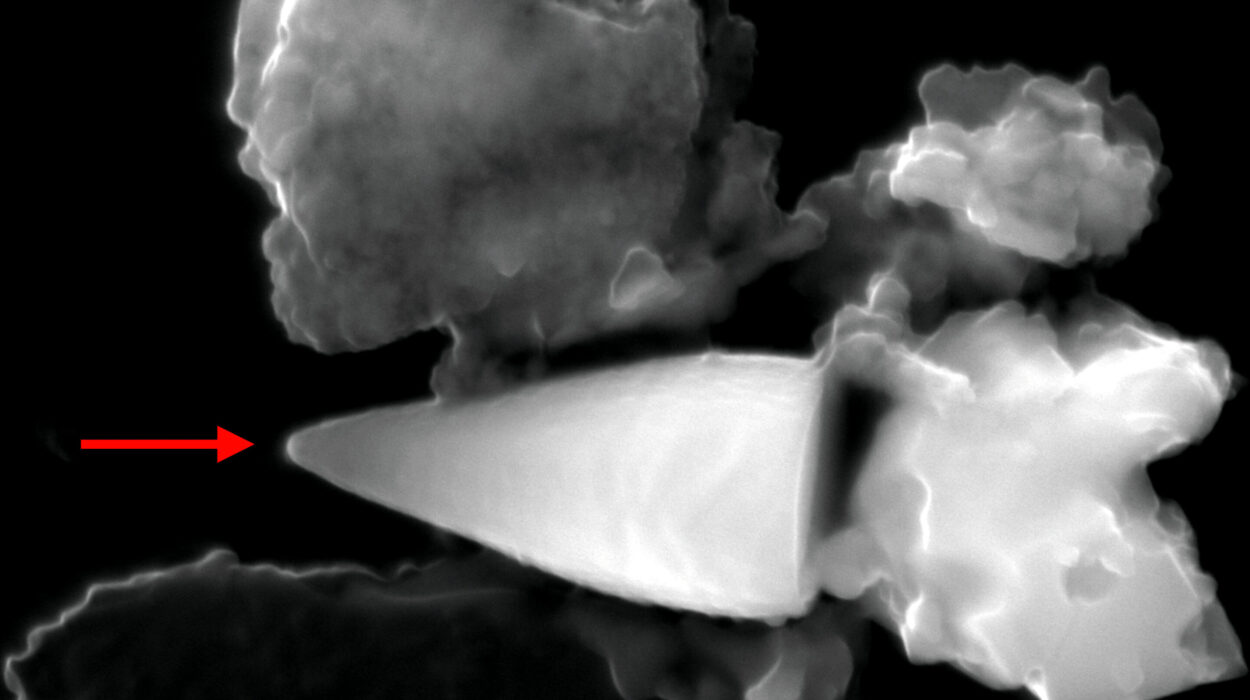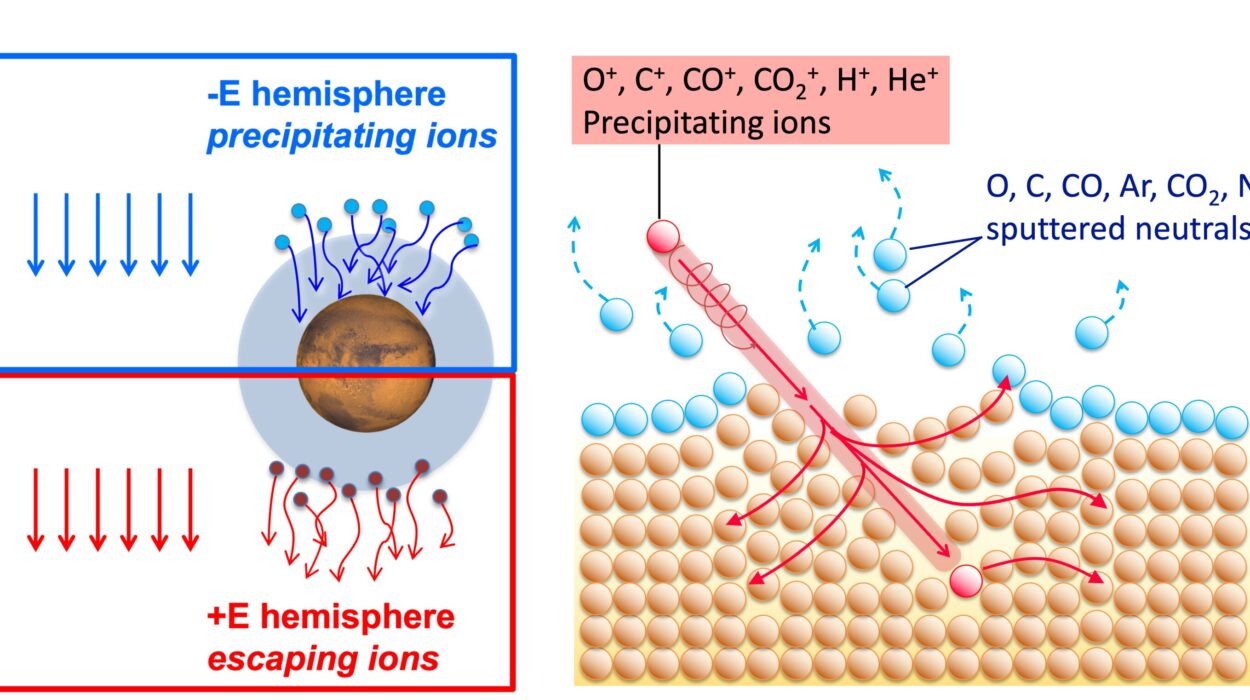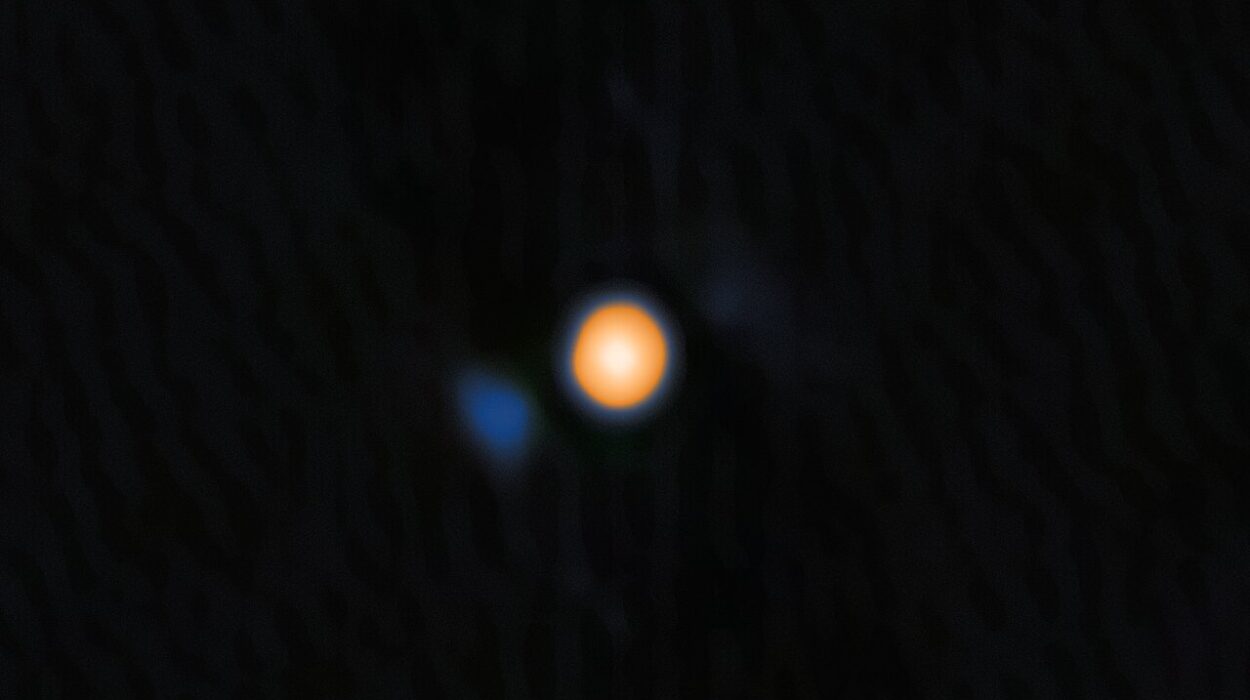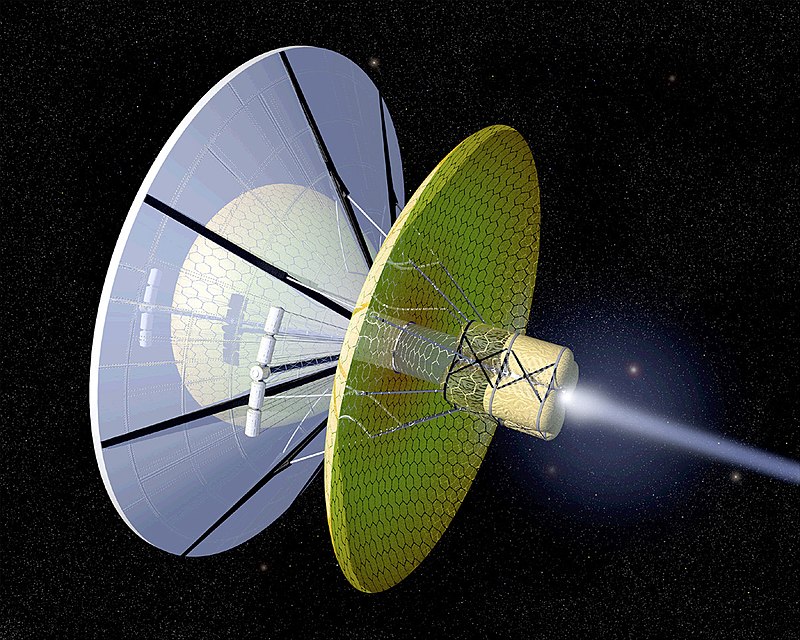The Moon has always been a symbol of human curiosity—a distant world shimmering in our night sky, calling explorers to push the boundaries of what’s possible. Now, as space agencies prepare for a new era of lunar exploration under NASA’s Artemis program, one challenge stands out as both essential and deceptively complex: how do we move cargo safely and efficiently across the Moon’s rugged, radiation-soaked terrain?
A team from the University of Toronto Institute for Aerospace Studies (UTIAS), led by Professor Tim Barfoot and Ph.D. student Alec Krawciw, may have found the answer. Their cutting-edge autonomy algorithms could soon make it possible for robotic lunar vehicles to navigate the Moon with precision, delivering vital supplies to astronauts while minimizing risk and maximizing efficiency.
Their research is part of a larger collaboration led by MDA Space, working toward the development of Canada’s proposed lunar utility vehicle—a project that could play a key role in the next phase of human exploration beyond Earth.
The Challenge of Lunar Logistics
When we imagine astronauts walking on the Moon, we often think of majestic views, footprints in dust, and groundbreaking discoveries. But beneath the romance of space exploration lies a world of logistics. Future lunar missions will involve not just exploration but also construction—building habitats, labs, and resource depots.
“The landing site is typically a flat area, chosen for safety during shuttle arrival,” explains Professor Barfoot, who also directs the U of T Robotics Institute. “But the habitat, where astronauts will live and work, needs to be protected from radiation, which means it’s usually located behind rocky terrain or inside craters. That means astronauts will need a reliable way to transport cargo—oxygen tanks, food, scientific instruments—from the shuttle to the habitat, often several kilometers away.”
That distance may not sound like much on Earth, but on the Moon, every meter poses a challenge. The terrain is unpredictable, temperatures swing between extremes, and communication with Earth can involve significant delays. For astronauts working in bulky suits and under dangerous conditions, repeatedly driving back and forth to move cargo would be time-consuming and risky.
This is where the UTIAS team’s innovation becomes transformative.
Teaching a Rover to Learn and Remember
Unlike traditional space rovers, which explore new terrain in many directions, the lunar utility vehicle will operate along fixed routes—carrying supplies back and forth between the landing site and the habitat. For this repetitive but vital task, Barfoot’s visual teach-and-repeat navigation system is ideal.
“Teach-and-repeat algorithms allow us to pilot the rover along a path once—either manually or semi-autonomously—so it can ‘learn’ that route,” says Barfoot. “After that, it can repeat the same path automatically, as many times as needed.”
This approach mimics how humans learn directions. Once we’ve driven somewhere a few times, we no longer need a map—we remember landmarks and key turns. Similarly, the rover uses visual cues from its onboard cameras to recognize its surroundings and navigate independently.
By automating this routine task, astronauts can focus on more critical mission objectives, while the rover reliably shuttles cargo between sites. The result is not just efficiency, but safety: fewer human trips across dangerous terrain, less exposure to radiation, and reduced risk of accidents.
Testing Earth Technology for a Lunar World
In December 2024, Barfoot and Krawciw took their algorithms out of the lab and into a simulated extraterrestrial landscape. Alongside partners from MDA Space and the Center de Technologies Avancées BRP at the Université de Sherbrooke, they conducted field trials at the Canadian Space Agency’s analog terrain facility in Montreal, which replicates the surface conditions of Mars and the Moon.
The goal was to test their system on the Lunar Exploration Light Rover (LELR), a versatile platform used for developing and validating new space technologies.
“Adapting our code to the LELR came with some unexpected challenges,” recalls Krawciw. “When simulating lunar conditions, there was a five-second delay between commands and feedback. That meant we couldn’t rely on joystick control like in normal tests. So we had to rethink how to ‘teach’ the rover—breaking the route into shorter path segments and developing a new semi-autonomous teaching method.”
That delay may sound trivial, but in robotics, even a few seconds can mean the difference between success and disaster. Developing systems that can operate effectively under such conditions is essential for real lunar missions, where communication delays with Earth can stretch even longer.
Despite these obstacles, the team’s test was a success. Their rover learned, remembered, and repeated its route—proving the viability of the technology in lunar-like environments.
From Field Trials to the Future of Lunar Missions
The success of the 2024 field trial led to a major milestone: in July 2025, the Canadian Space Agency selected the team to conduct an early-phase study for Canada’s lunar utility vehicle. This project will be part of Canada’s contribution to NASA’s Artemis program, which aims to establish a sustainable human presence on the Moon.
This lunar utility vehicle will be a workhorse for the Artemis missions—an autonomous assistant capable of transporting cargo, deploying equipment, and possibly even supporting construction of lunar infrastructure.
For Krawciw, the project is more than a technical challenge—it’s a dream coming to life. “It’s always exciting to see something I worked on in the lab come to life in a real space-focused mission,” he says. “Running the system continuously in the field taught us so much. It wasn’t just about getting the autonomy to work—it was about making it reliable, intuitive, and durable for real operators in tough conditions.”
Engineering for the Human Experience
What makes the UTIAS project so compelling is not just its scientific ingenuity, but its focus on human experience. Every technical decision is grounded in one goal: to make life easier, safer, and more productive for astronauts.
Imagine an astronaut waking up in a lunar habitat, surrounded by silence and endless gray dust. Outside, the temperature swings from boiling heat to freezing cold. Yet, across the barren landscape, a small robotic vehicle is quietly making its way toward the base, carrying oxygen canisters and tools—all on its own, guided by algorithms written thousands of kilometers away in a university lab on Earth.
That image captures the essence of this research: the merging of human creativity and machine intelligence to overcome challenges that once seemed impossible.
The Broader Impact: From the Moon to Earth
While the team’s focus is on lunar exploration, the implications of their work extend far beyond space. Autonomous navigation in harsh environments has potential applications in mining, disaster response, Arctic exploration, and even planetary defense.
The same algorithms that teach a rover to drive itself across the Moon could one day guide autonomous vehicles in remote regions of Earth, where GPS signals are weak and communication is limited.
Moreover, Canada’s growing leadership in space robotics—strengthened by innovations like the Canadarm and now the lunar utility vehicle—demonstrates the country’s pivotal role in shaping humanity’s next great adventure.
Toward a Sustainable Presence on the Moon
The Artemis program is not a return to the Moon for nostalgia’s sake—it is the first step toward a sustainable human presence beyond Earth. That vision demands technology that is not only advanced but dependable.
Barfoot and Krawciw’s work embodies that vision. Their teach-and-repeat system provides a foundation for autonomy that can be trusted to perform, adapt, and endure under the harshest conditions imaginable. It is a quiet revolution in how we think about space travel—not as a heroic one-time leap, but as an ongoing, carefully engineered partnership between humans and machines.
The Spirit of Discovery
At its heart, this story is about more than algorithms or robots. It is about exploration—the relentless drive to understand, to create, to push forward. It’s about students and scientists turning dreams of space into tangible reality.
As the lunar utility vehicle moves closer to deployment, one can imagine a future where fleets of autonomous rovers roam the Moon, building infrastructure for astronauts, preparing habitats, and paving the way for humanity’s next great frontier: Mars.
For now, it begins with a rover learning its path, one meter at a time, on a dusty test field in Montreal—a humble rehearsal for a journey that will soon take us hundreds of thousands of kilometers away.
